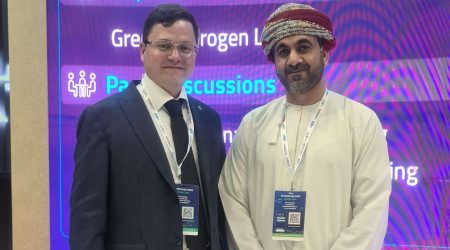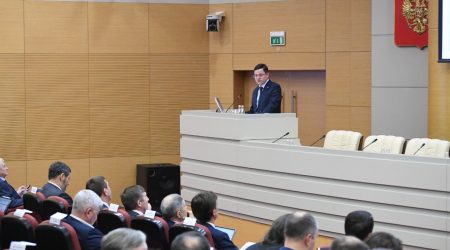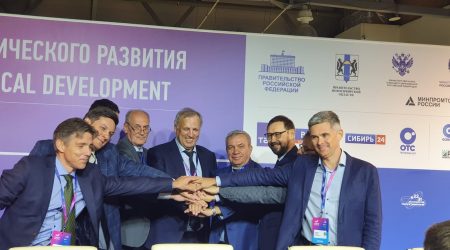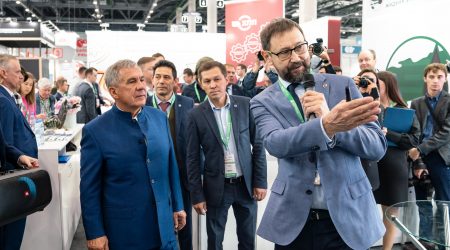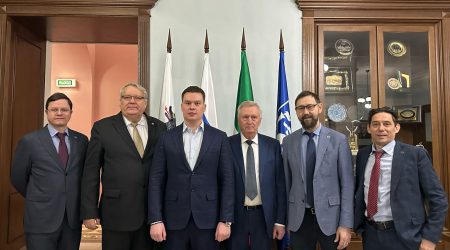Vice-Rector Danis Nurgaliev speaks at Tatneft’s 75th anniversary celebrations in Almetyevsk
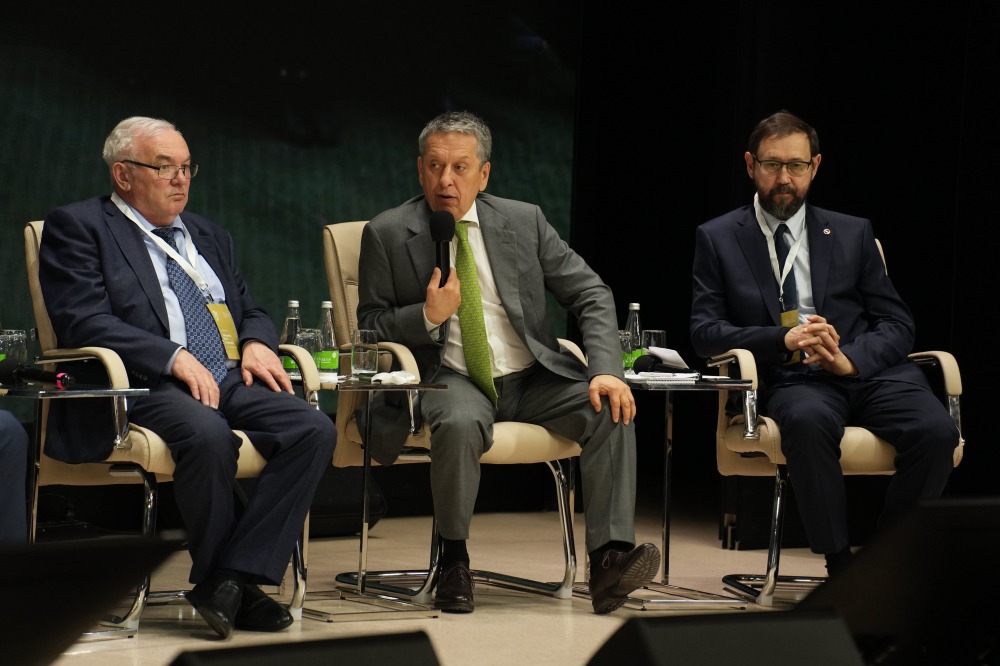
A celebratory event was held at Almetyevsk State Technological University – Higher School of Petroleum.
Nail Maganov, General Director of TATNEFT, welcomed the audience. At the opening ceremony, a congratulatory telegram from the President of Russia Vladimir Putin was read out, as well as warm words from the Rais (Head) of Tatarstan Rustam Minnikhanov.
The guests of honor at the ceremony were: Gennady Shmal, President of the Union of Oil and Gas Industrialists of Russia; Shafagat Takhautdinov, Aide to the Rais of the Republic of Tatarstan on Oil Industry Issues, member of the Board of Directors of Tatneft; Timur Khalitov, Director of the Science and Technology Foundation of the Republic of Tatarstan; Danis Nurgaliev, Vice-Rector for Earth Sciences of KFU, and others.
Dr. Nurgaliev spoke at the plenary discussion “TATNEFT – Experience of the Past, Energy of the Present, Sustainability of the Future”. He spoke about the contribution of KFU scientists and graduates to the development of Tatarstani oil fields. At the beginning of his speech, the Vice-Rector congratulated the company’s staff on the anniversary, noting that it is still the backbone of the Republic of Tatarstan. Telling about the history of oil discovery in the region, the speaker focused on the fact that to date Tatarstan has produced about 3.6 billion metric tons of oil.
“A systematic study of Permian and coal deposits began in Kazan in 1860,” said the Vice-Rector. “In 1860 – 1870, Professor Nikolai Golovkinsky and his students surveyed rock outcrops along the Volga, Kama, Vyatka, Sviyaga, Kazanka, and other rivers. Then Alexander Shtukenberg conducted geologic studies of the Kama and Volga regions together with his students between 1870 and 1900.”
He added that in the early 20th century, Kazan University professor Mikhail Noinsky developed a hypothesis of secondary accumulations of bitumen in the upper part of the section and its penetration into these rocks from below, from deeper horizons through dislocation cracks. An important role in the preparation of priority oil prospecting areas was also played by surveys conducted under the guidance of university professor Evgenia Tikhvinskaya in the Romashkino and Bavly areas in 1933 – 1934.
“The discovery of commercial oil in the Shugurovo uplift brilliantly confirmed the sagacity of many progressive geologists who associated the presence of oil in Permian sediments with deep-lying horizons of the Carboniferous and Devonian. The Romashkino uplift discovered by Tikhvinskaya was chosen as the next object for exploration,” noted Danis Nurgaliyev.
According to the speaker, a great merit in the development of oil exploration in Tatarstan belongs also to A. Trofimuk, A. Melnikov, S. Egorov, M. Maltsev, V. Troepolsky, I. Shpilman, F. Begishev, A. Kinzikeev, N. Erofeev, R. Khachatryan, S. Ellern, G. Batanova, G. Donov, and other scientists.
“After the discovery of big oil of the Ural-Volga region in the 1930s-40s, and first of all the uniquely huge Romashkino field in 1948, the country as a whole and Tatarstan in particular suddenly had an urgent need to train oilers,” emphasized the Vice-Rector. “In 1952, the Department of Oil Geology and Geophysical Exploration Methods was organized at the Faculty of Geology of Kazan University, and the first oil geologists were Viktor Troepolsky, Sergey Yegorov, and Semyon Ellern.”
Over 2,000 alumni of Kazan University have partaken in the development of Romashkino, he said.
“When you look at a modern map of the Romashkino field with all its wells, it seems that it was so easy: come, drill a well at any point of the field and get a fountain. The reality is much more complicated!” remarked the scientist, talking about the mysteries of the field.
Tatneft and KFU are longtime partners in education, science, and employment.




